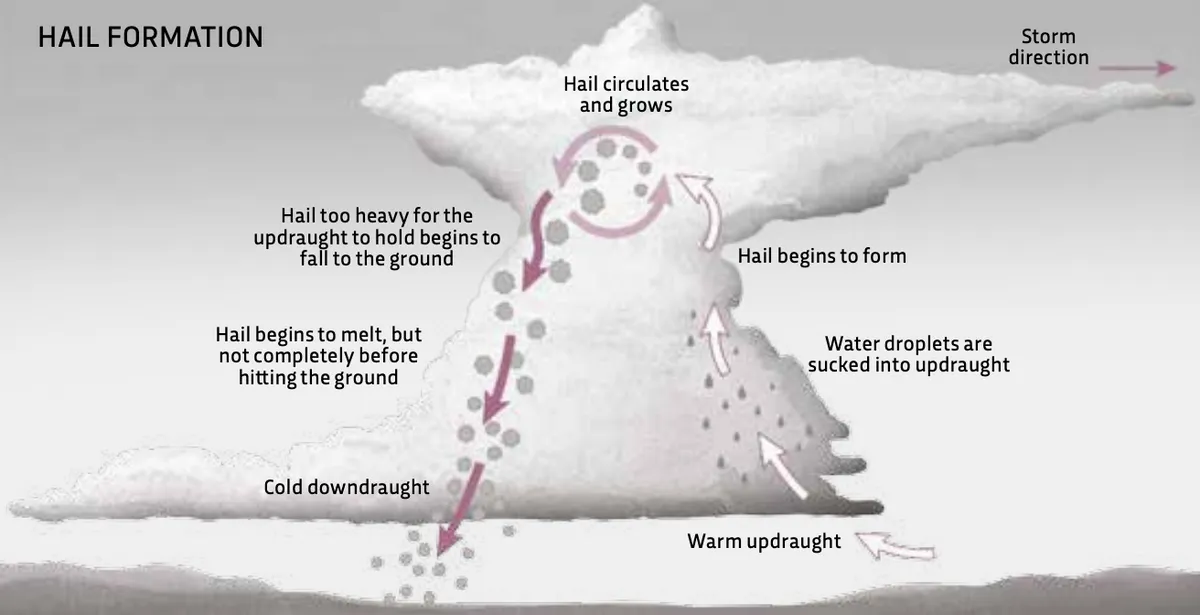Asked by: Dave Ferris, London
Hail is produced during thunderstorms, when anupdraughtof warm, moist air carries tiny droplets of water upwards. The droplets freeze at high altitude, and the resulting ice crystals grow until they are too heavy to stay suspended.
For hail to form, a warm air mass has to meet a much colder one (this is what creates theupdraught). The hail only forms in a narrow region where these two air masses meet, meaning that it falls over just a small strip of land.

These high-energy storms also tend to move quickly, so someone on the ground experiences the hail as a short burst. Finally, as they need a supply of warm, moist air to fuel them, hailstorms relatively quickly run out of energy and dissipate.
Read more:
- How can my cat know that a thunderstorm is on its way an hour before I do?
- Can trees predict the weather?
- Is it true that cows lie down when it’s about to rain?
- This is what it’s like to be struck by lightning
Subscribe to BBC Science Focus Magazine for fascinating new Q&As every month and follow @sciencefocusQA on Twitter for your daily dose of fun facts.
